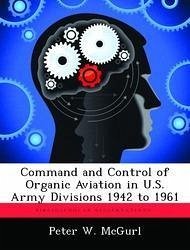The objective of this thesis is to provide the reader with a record of the most important developments in the evolution of doctrine for the command and control of organic divisional aviation between 1942 and 1961, and to provide a source of reference data for more detailed study of the subject. Throughout this paper, the words "command" and "control" are used separately and should not be considered together as a term referring to a communication system for directing and controlling air activities. In conducting research for this thesis, events were reviewed in chronological order as far as possible. The total period involved was divided into chapter-sized parts which contained the significant developments of specific eras. Each major change in organization of the division and important shift in the tactical situation during combat were examined to determine their effects on command and control techniques and procedures. The main source of reference material was the archives of the U. S. Army Command and General Staff College. The material in this thesis is presented in chronological order. Since doctrine for employment of organic aviation was very similar in each type of division, emphasis is placed on infantry division employment doctrine. Major differences between the infantry division and other types of divisions are discussed briefly where they are of interest to the study.








